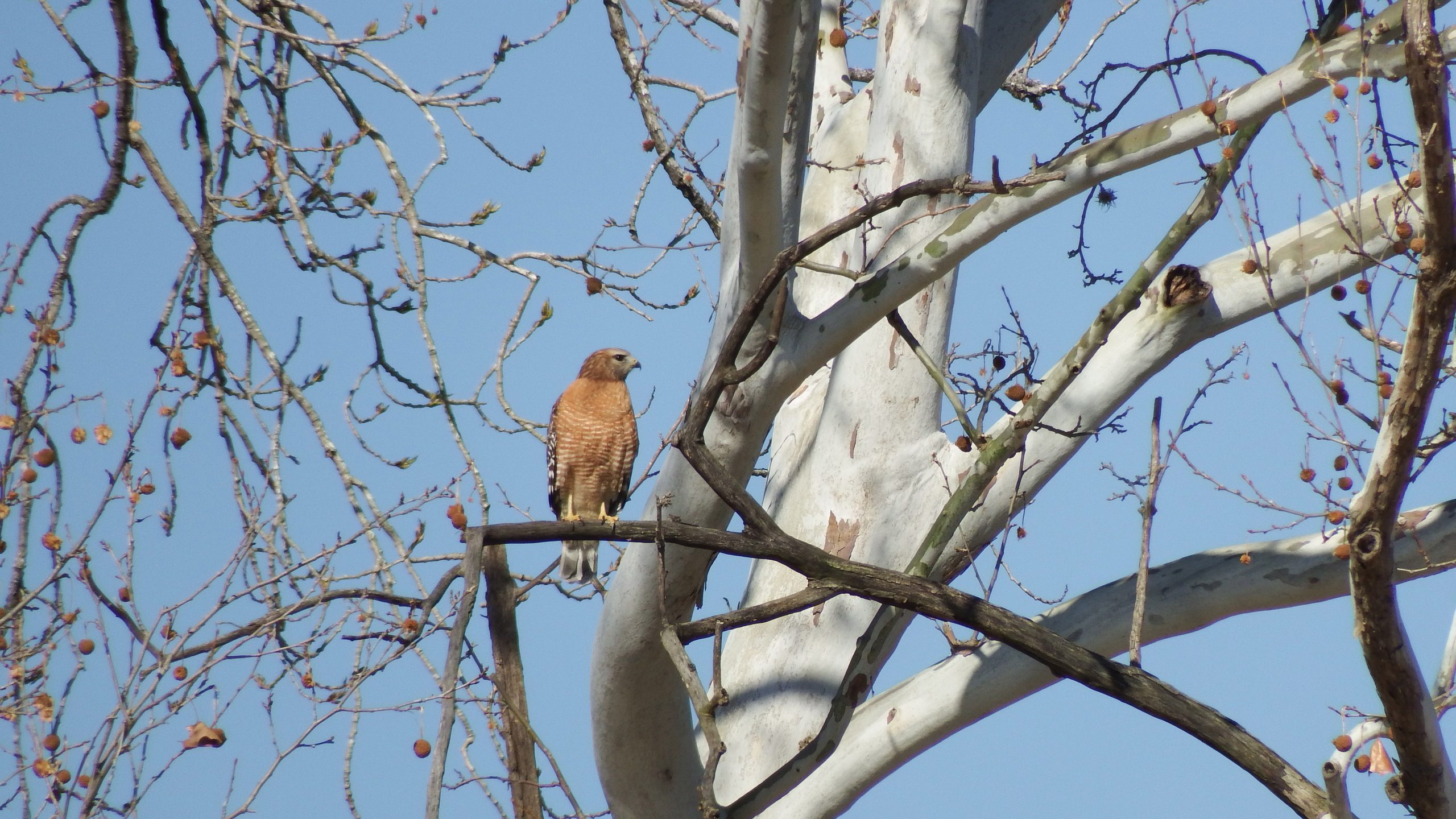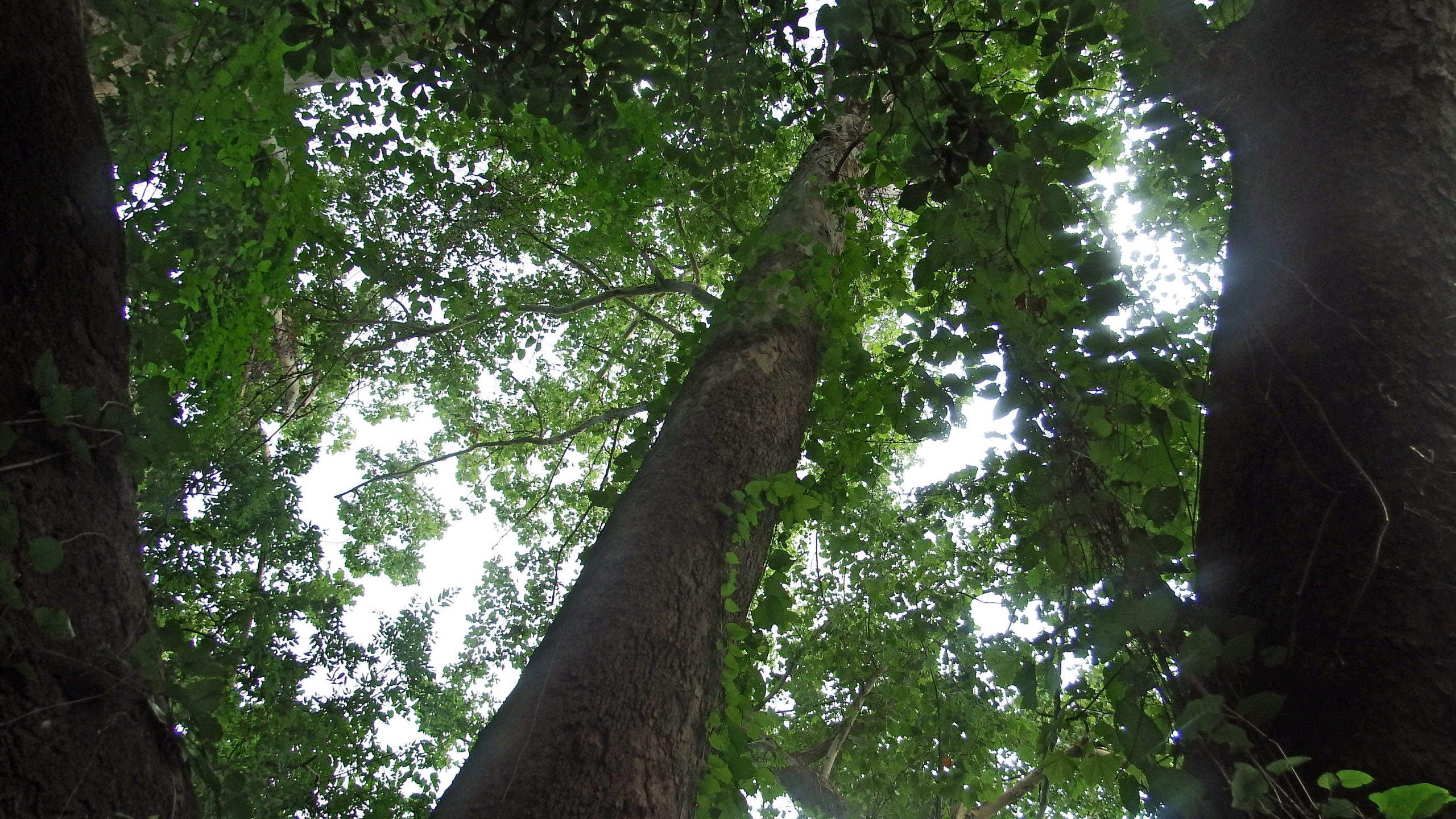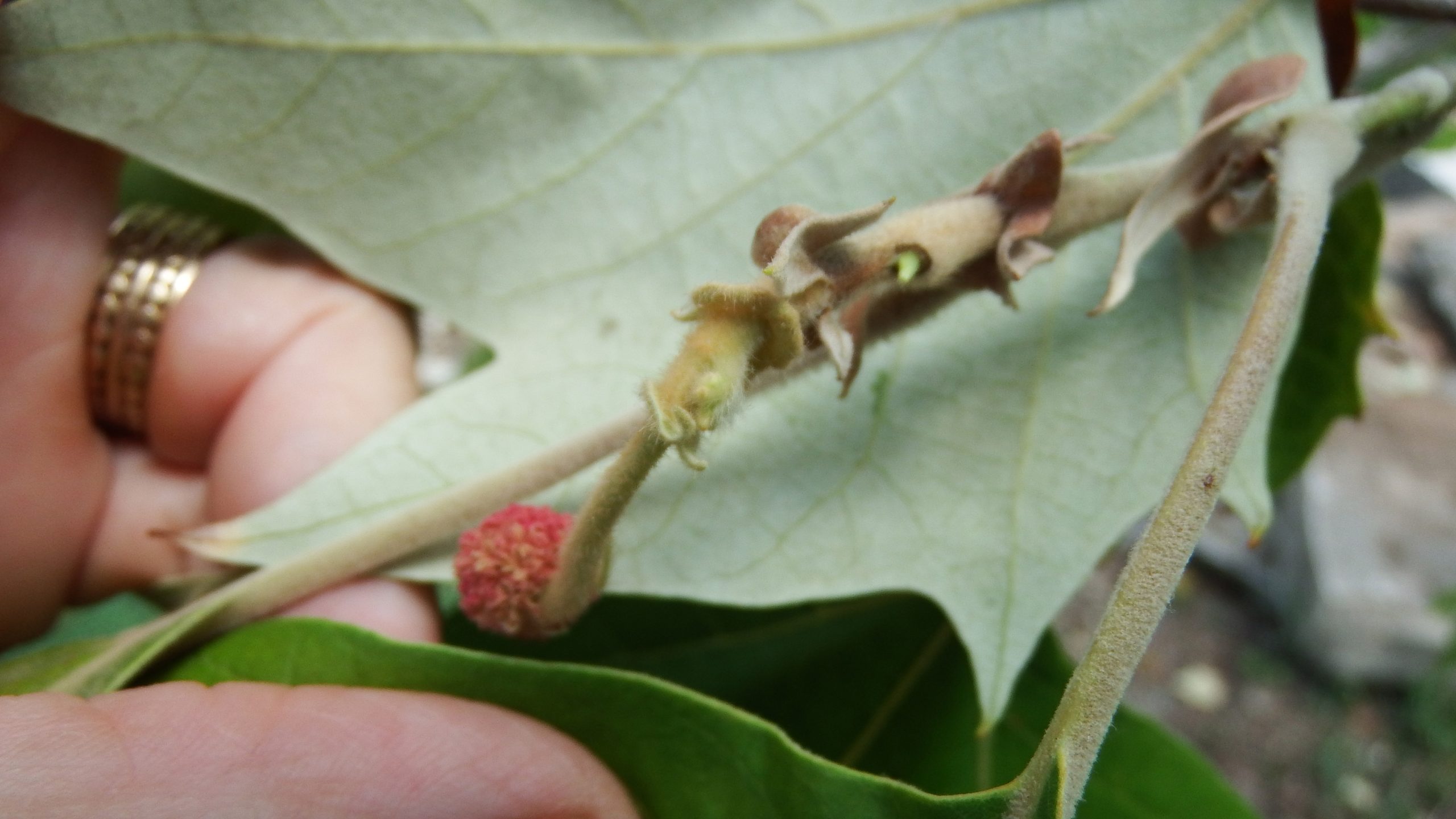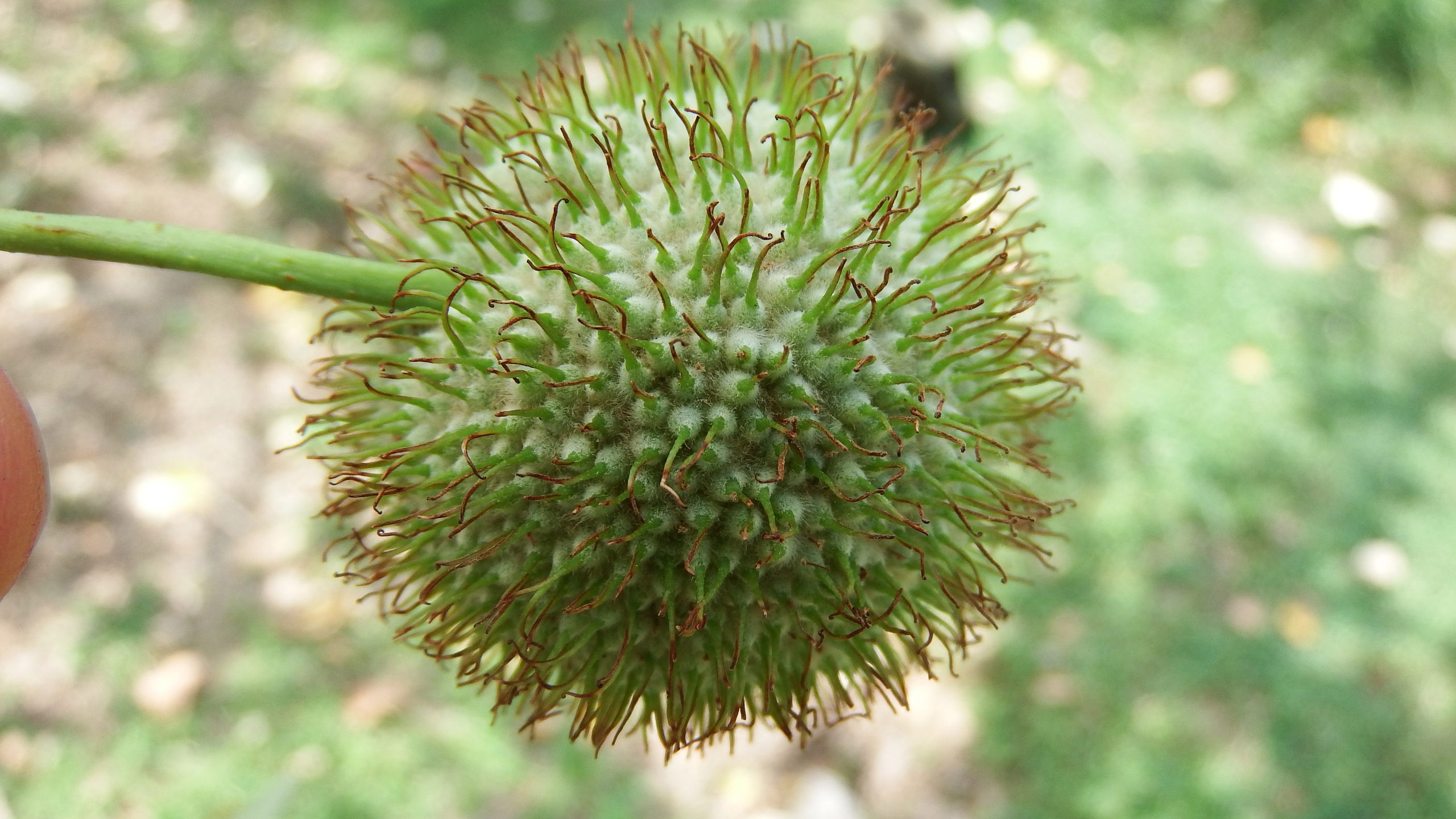Bones of the Bayou

I love sycamore trees, especially in winter when all the leaves have left and the white branches shine like bones.
As much as I love sycamores, I haven’t written about them much. We have an incredible one on the greentree path. I believe it to be one of the oldest trees in Houston. But I didn’t think of this common street tree as a blog topic until I heard someone refer to a buttonwood tree. I had never heard of a buttonwood tree and I got excited. Upon Google-ing, I learned that a buttonwood tree is a sycamore.
Most wood, carved into something so small and thin as a button would split without much pressure. But sycamore wood is so fine-grained and strong that was used for buttons. I thought this was going to be the coolest sycamore fact until I ran into stories about people living in them.
Sycamores are the largest tree in the eastern US. The tulip tree might get a bit taller, but sycamores are just massive. The largest of them can have trunks with a diameter of nearly 13 feet. As they age, the inner wood rots away, but the outer wood is so strong and dense, it continues to support the tree, leaving a huge void.
Early American history is littered with settlers who lived for a year or more inside a sycamore as they prepared more robust housing. Hunters, explorers and trappers also used convenient sycamore hollows to make camp.
There is a wonderful story about two brothers who deserted Fort Pitt in the 1700s. They ran off into the West Virginia woods and lived in a large sycamore tree for three years until their provisions ran out. They went in search of food and found that they were no longer wanted men. So they returned to the tree and started a town at that site. There is still a sycamore there; it is believed to be a great-grand tree of the original.
Sometimes sycamores hollowed out completely. This is where chimney swifts lived while they were waiting for us to invent chimneys.

Looking up at an ancient sycamore on the Greentree trail. Notice that the undersides of the leave are all green. American Sycamore.
Sycamores had a lot of uses. With their hollow centers, they made for good canoe wood. They were so strong, that sycamore rounds were used as wagon wheels.
But more important to native peoples and European settlers than all of that is that sycamores take you to water. Those glowing white trunks are visible for a great distance and sycamores need a lot of water. They are most readily found on stream banks. It’s not surprising that we have them all over Houston.
Many if not most of the sycamores we have in the Park are Mexican sycamores. You can tell from the silvery underside of the leaves. American sycamores have leaves that are green on both sides. Mexican sycamore leaves are also a little fuzzy. American sycamore leaves are smooth.

I took this somewhat blurry photo of a sycamore flower, but it is much better at showing the silvery undersides and overall fuzziness of Mexican sycamore
I live near the Park in a neighborhood that is over a hundred years old. We have lovely, large sycamores as street trees. They are American sycamores. They are likely older than all but the oldest sycamores in the Park. I imagine that many of the Park’s sycamores were planted as the Park was developed and were selected because the silvery undersides make the Mexican sycamore a striking landscape tree. But the old trees are all Americans.
Sycamores are one of the trees that almost everyone can identify because of their white limbs. Every on-line authority I consulted says the same exact thing: sycamore bark is so rigid it cannot expand as the tree grows, as a result, the bark cracks and falls off exposing I presume younger and whiter bark which is itself doomed to turn green and brown and crack until it, too, falls off. But the lower trunk of an American and Mexican sycamore will stop exfoliating as the tree gets up in years. The lower bark is rough and brown. I have no idea why the lower bark doesn’t fall off; I cannot find anything that makes it clear to my addled brain.
But take heart, as hot as it is, winter is will eventually arrive and the bones of the bayou will be revealed once again.

A sycamore flower gone to seed. Each seed will float away (there are hundreds of seeds forming in this flower) It will dry up into a lovely round lacy ball.

